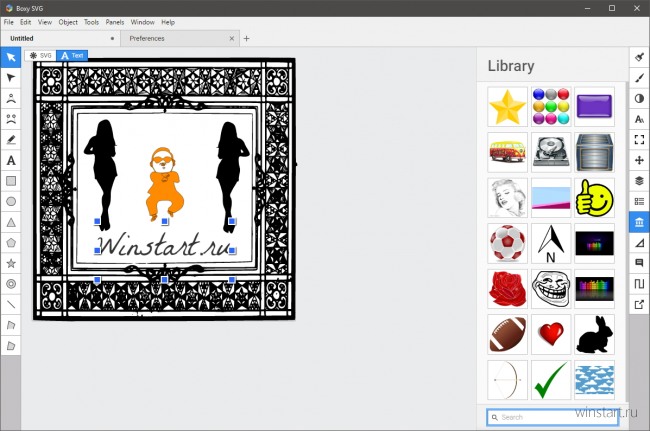
Group the elements and FIT THE OBJECT TO THE ARTBOARD (not viceversa). svg extension.Ģ) Avoid to use real text font inside an illustrator file, "expand" them so that they will be vector and can be resized without a problem (if the OS doesn't have that font, it will render a font of the system).ģ) Open in illustrator the file, and copy and paste your work. Working in square as metric is easier.ġ) Create an empty field via text editor with "0 0 100 100" value (that will be your standard file that you'll open from now and on). So you might want to have a viewbox that is square shaped more than rectangular, something like "0 0 32 32" or "0 0 100 100" so that you can move the SVG element around and resizing by just modifing via text editor the SVG rather than from Illustrator.Įven because if you resize the element just in height, still will be limited by its max width.
Boxy svg import code#
Illustrator add a lot of nonsensical code that I prefer not to have in my SVG files, I use it only when I need to shape a "path" that I need to use.įirst of all having a decent viewbox number helps a lot when dealing with SVG elements. I know that this is not exactly the answer that you want, but I work mostly with SVG limiting his use with Illustrator because you can work easily directly with text. You can test this with any svg, but here's a super simple one that is 320 x 240: Note: I do not want to save the svg from Illustrator with the "preserve Illustrator editing capabilities" in the save as svg dialog. Is there a workaround for this that does not involve opening a fake document with the artboard size of the svg, then closing that doc and File > Open the actual svg? As such, the svg, if not the same size as the previous artboard, is then placed and auto-resized into that artboard. B.When I try to open an svg file with Illustrator, Illustrator defaults to whatever artboard size was last used when a file was open. Quick fix: Hit Ctrl-F, find and replace the font names in your SVG codes (from 'Roboto-Black' to 'Roboto' in my case). There's no Roboto-Black in your URL, causing missing fonts when your SVG is embedded onto your web site. If you're using Roboto from Google Web Fonts: url() īut when your SVG is exported (mostly on older versions of Illustrator), the font-family that appears in your SVG is: There are 3 possible causes, and here is how you can solve them. You embedded Google Web Fonts into your SVG and the fonts render differently in browser: Fonts before and after export

Here are the 5 most common issues faced by SVG users, and knowing them could help you to get productive with SVG quickly: 1. We have consolidated and summarized our experiences in dealing with SVG, after compressing nearly 200,000 SVG at Nano - the world's best SVG compressor. It's easy to throw up our hands and say, “Forget about SVG, let's just go back to the good ol' PNG!”, but there are actually techniques you could employ to resolve these common problems easily, to ensure you enjoy the benefits of SVG, reduce a ton of bandwidth and make your site load faster. If you are just starting to give SVG a try, and already have a beautiful drawing at hand, you may expect your SVG to show up exactly as it is in the editor, all sharp and crisp, unfortunately, that may not be the case once embedded on your website. 5 Most Common Problems Faced by SVG UsersĪs SVG adoption increases 100% year-over-year, front end developers and designers like yourself will increasingly be expected to use more and more SVG in websites, all around the world.


 0 kommentar(er)
0 kommentar(er)
